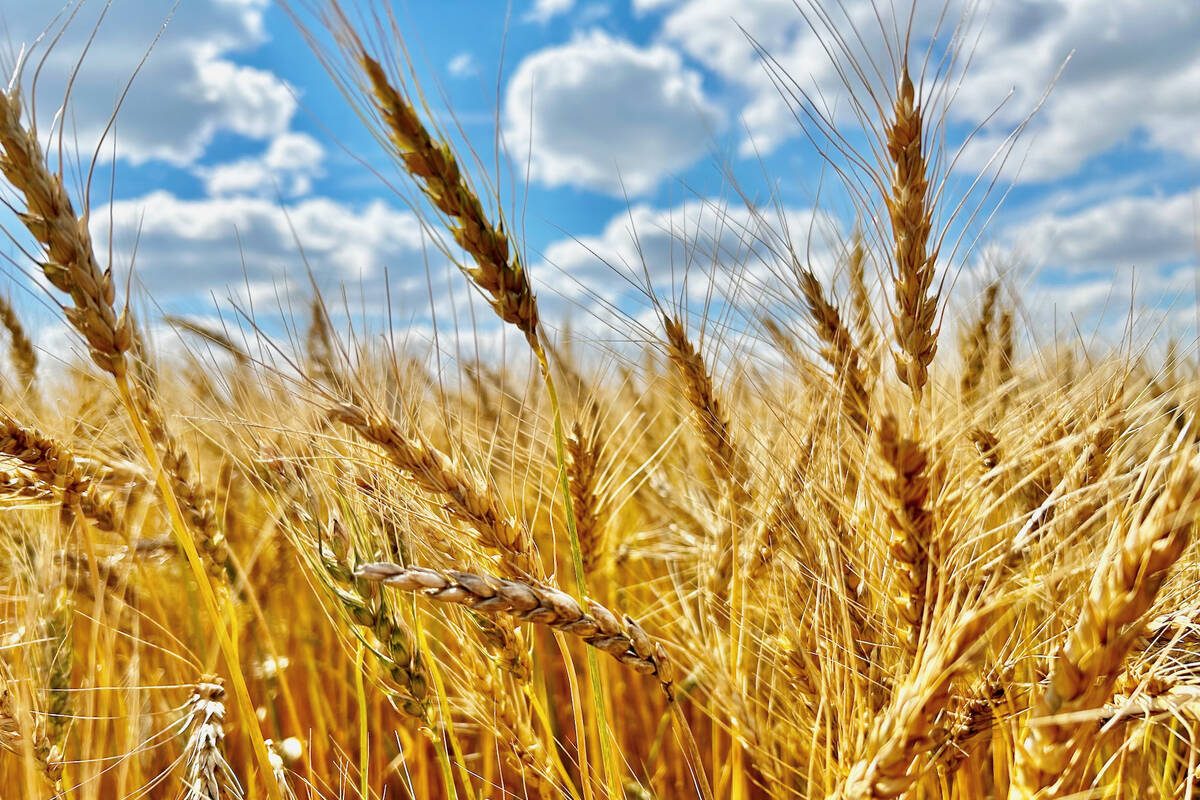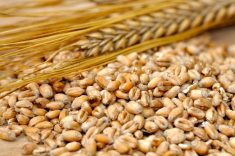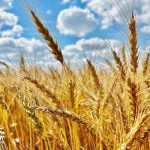For the week ending April 30, western Canadian feeder cattle prices were quite variable. Yearlings traded $8 lower as much as $5 higher. Severe discounts were noted on fleshier cattle; some auction barns reported the bulk of cattle over 800 pounds were medium to heavier flesh.
Deferred live cattle futures were under pressure but the weaker Canadian dollar underpinned Alberta fed prices for the third quarter. Feed grain markets continue to percolate higher but most feedlots have their requirements covered for the next couple of months. Demand for backgrounded cattle in Alberta is limited, with feedlot inventories up 10 per cent from last year. Usually, the feeder market rallies from mid-May through July. Order buyers stated some feedlots were stepping ahead of the seasonal rally — August feeder cattle futures were down $8 from last week and buyers were securing ownership in this softer psychological environment.
Read Also

Expana lifts EU cereal forecasts, maize exceeds expectations
Expana has raised its monthly grain production forecast for European Union crops for the 2025/26 season, projecting soft wheat output will hit a record high and barley a 17-year high.
South of Edmonton, a small group of Angus/Simmental-blended steers weighing a shade under 900 lbs. with full health records on small grain ration dropped the gavel at $186; their lighter brothers with the same features weighing 860 lbs. were valued at $194. Near Lethbridge, a sizeable group of larger-frame medium- to lower-flesh black steers weighing 915 lbs. sold for $192 and similar-quality and -genetics steers averaging 750 lbs. were valued at $217. Northwest of Winnipeg, a small group of medium- to larger-frame mixed steers carrying thicker butter weighing 875 lbs. were quoted at $187. The heifer discount to steers appeared to widen in the eastern Prairie regions.
Calves in Manitoba traded $3-$4 higher but Alberta and Saskatchewan values were up $3 to down $4. Manitoba has received greater than 200 per cent of normal precipitation over the past month; southern Alberta has received less than 40 per cent of normal precipitation. This explains the price structure in each region. Calves were “boiling hot” in Manitoba while demand in Saskatchewan and Alberta was lukewarm at best. Larger groups of calves carried a $3-$5 premium over smaller packages under 15 head.
In southern Manitoba, a small group of Charolais-based steers averaging 550 lbs. were reported at $251 and similar-quality and -weight heifers were valued at $192. Southeast of Saskatoon, a small group around 25 head of larger-frame red steers weighing 615 lbs. were quoted at $237. A group of 50 black steers averaging 545 lbs. dropped the gavel at $240 and similar-quality heifers in a group just over 100 head weighing 610 lbs. were valued at $196. In the Red Deer region, a small group of black steers weighing 625 lbs. sold for $221 and 10 black heifers weighing 560 lbs. sold for $210.
Canadian farmers intend to seed 7.5 million acres of barley this spring, down from last year’s seeded area of 8.3 million acres. Using an average yield and traditional abandonment rate, I’m projecting a crop size of 10.4 million tonnes, up from the 2021 crop of 6.9 million and up from the five-year average of 9.2 million. This larger barley crop should be supportive for calves. Seeding will occur later than normal, making the wheat crop vulnerable to adverse weather.
— Jerry Klassen is president and founder of Resilient Capital, specializing in proprietary commodity futures trading and market analysis. Jerry consults with feedlots on risk management and writes a weekly cattle market commentary. He can be reached at 204-504-8339 or via his website at ResilCapital.com.
















